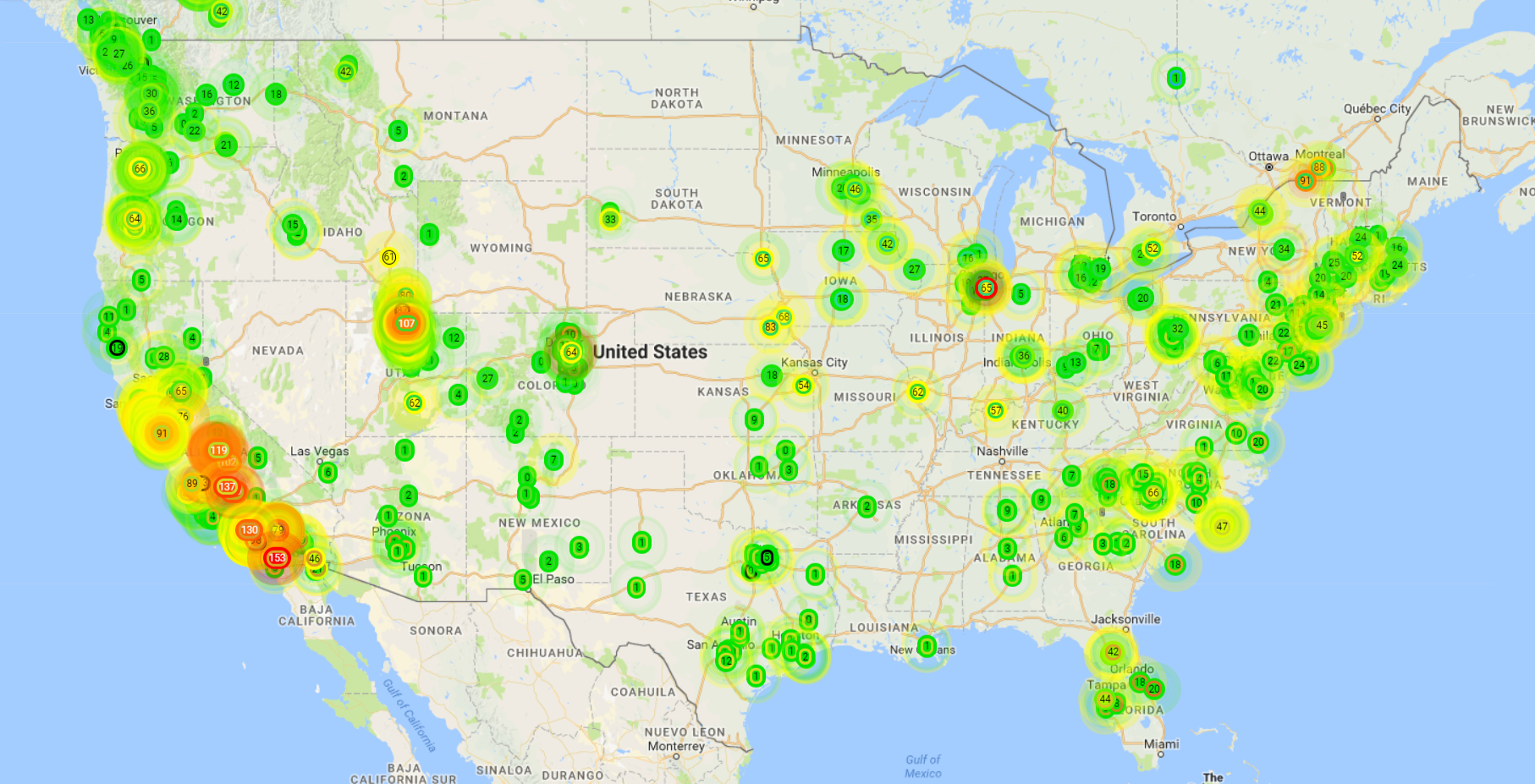

- #Purple air map registration
- #Purple air map code
- #Purple air map plus
Most of the country has seen downward trends in PM 2.5 since 1998, with only a few areas showing an increase in PM 2.5 since 1998. PurpleAir PA-II uses dual PMS5003 sensors, while PA-I uses one PMS1003 sensor. The accomplishments of the Clean Air Act and policies such as the Diesel Emissions Reduction Act can be seen across the country in the map we see here.
Data visualization: PurpleAir Map or University of Utah's MesoWest Map The PurpleAir PA-II-SD is a low-cost particulate matter (PM2.5 and PM10). PurpleAir online mapping of the East Bay at the end of January shows real-time air quality data from sensors around the region. 
#Purple air map code
Data communication and logging: ESP8266 chip runs code developed using Arduino to upload data to a cloud. Environmental operating conditions: N/A. PMS5003 sensors come factory calibrated. PurpleAir PA-II uses two identical PMS5003 sensor units attached to each other and placed in the same shelter. These particle counts are processed by the sensor using a complex algorithm to calculate the PM 1.0, PM 2.5 & PM 10 mass in ug/m 3. These sensors count suspended particles in sizes of 0.3, 0.5, 1.0, 2.5, 5.0 and 10um. PurpleAir PA-II uses Plantower PMS5003 laser particle counter, where laser beams detect particles going past by their reflectivity. To see current pollution levels click on Instant in the top right. Then click on the Impact tab for activity suggestions. Useful to community scientists or air quality professionals alike, PurpleAir sensors are easy to install, requiring only a power outlet and WiFi. Visualize PM2.5 AQI in your area for free. Click on a circle or star to see pollution for that site. Hyper-local, real-time, public air quality map. Measurements of PM 1.0, PM 2.5 & PM 10 mass concentrations are calculated from the counts. Good (0-50 AQI) Moderate (51-100 AQI) Unhealthy for sensitive groups (101-150 AQI) Unhealthy (151. The dataset was split into two groups, the first for linear regression / curve fitting comprising 90% of the data points for the purpose of performing linear regression and the second comprising 10% of the data point for the purpose of validation of the curve fit.įor each size range (PM 2.The PurpleAir (PA-II) Sensor is an optical particle counter. #Purple air map plus
These were averaged every hour to synchronize the reporting interval of all sensors.įor the calibration of the PurpleAir sensor against the E-BAM PLUS instrument, hourly data covering a span of three months (from Jto September 30, 2020) from a single PurpleAir sensor was used resulting in a total number of 2163 data points. ĭata is reported by the E-BAM PLUS at an hourly interval and every two minutes for the PurpleAir sensors. The location of the PurpleAir sensors was chosen to be the campus of the American University of Beirut which is located within the capital, Beirut, as it is representative of background PM levels within the city and also to have it adjacent to the Met One E-BAM PLUS instrument, the reference measurement, which are part of the American University of Beirut Air Pollution Observatory Project. Report on the precision of measurements of PurpleAir sensors and inter-sensor variability by comparing measurements of multiple sensors from a single location ( Figs. 11 and and12 12). Latitude and longitude for collected samples/data: 33.9N, 35.5Eĭata identification number: 10.17632/rh2z7s7btj.1 Sensor Installation Mount or place your sensor in the desired location, ensuring to provide a power outlet, and adequate WiFi signal strength.
#Purple air map registration
Institution: American University of Beirut Use the registration form ( to place a sensor on the PurpleAir Real-time Map. Unless specified, data reported by a given instrument is the average of both channels.
PurpleAir instruments have two optical sensors, channel A and B. PurpleAir are real-time optical air quality sensors measuring PM2.5 and PM10. Exclusion of timestamps with missing data points for any sensor for that timestamp. Negative readings were excluded (2 datapoints out of 2163). Data was retimed and averaged to an hourly reading to synchronize with the reference E-BAM PLUS data. 
Data logging by E-BAM Plus is recorded every 1 h.Data logging by PurpleAir instruments was every 2 m.1 Met-One E-BAM PLUS configured for measuring PM10.1 Met-One E-BAM PLUS configured for measuring PM2.5.







 0 kommentar(er)
0 kommentar(er)
